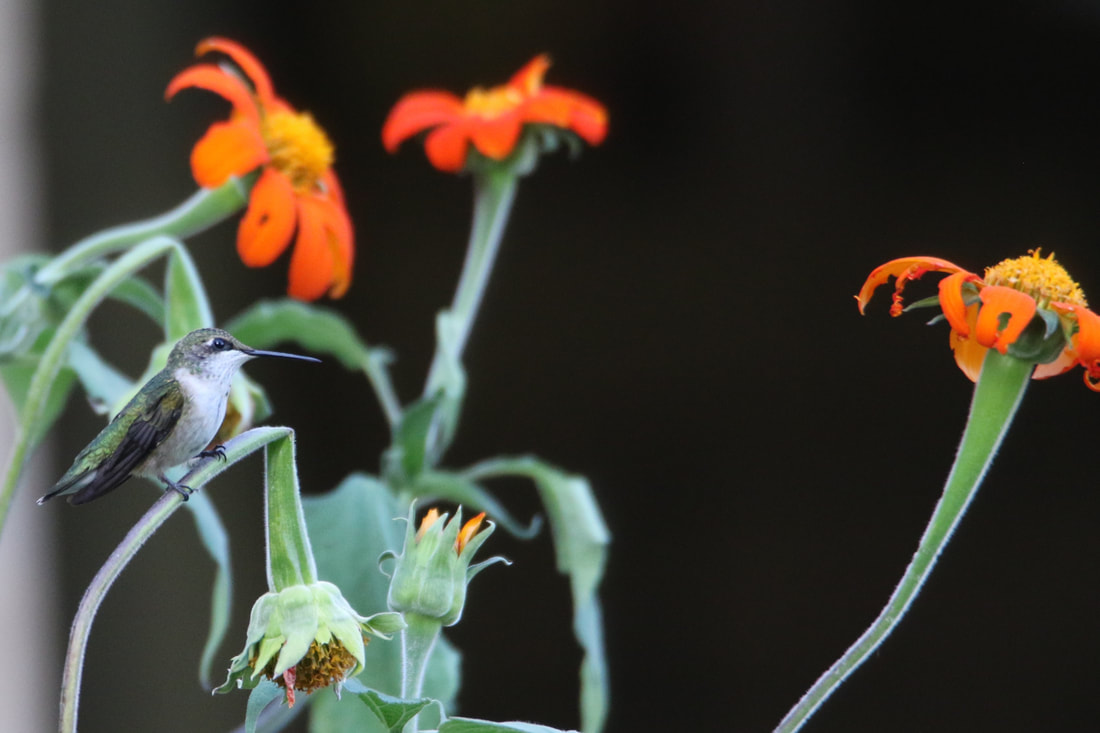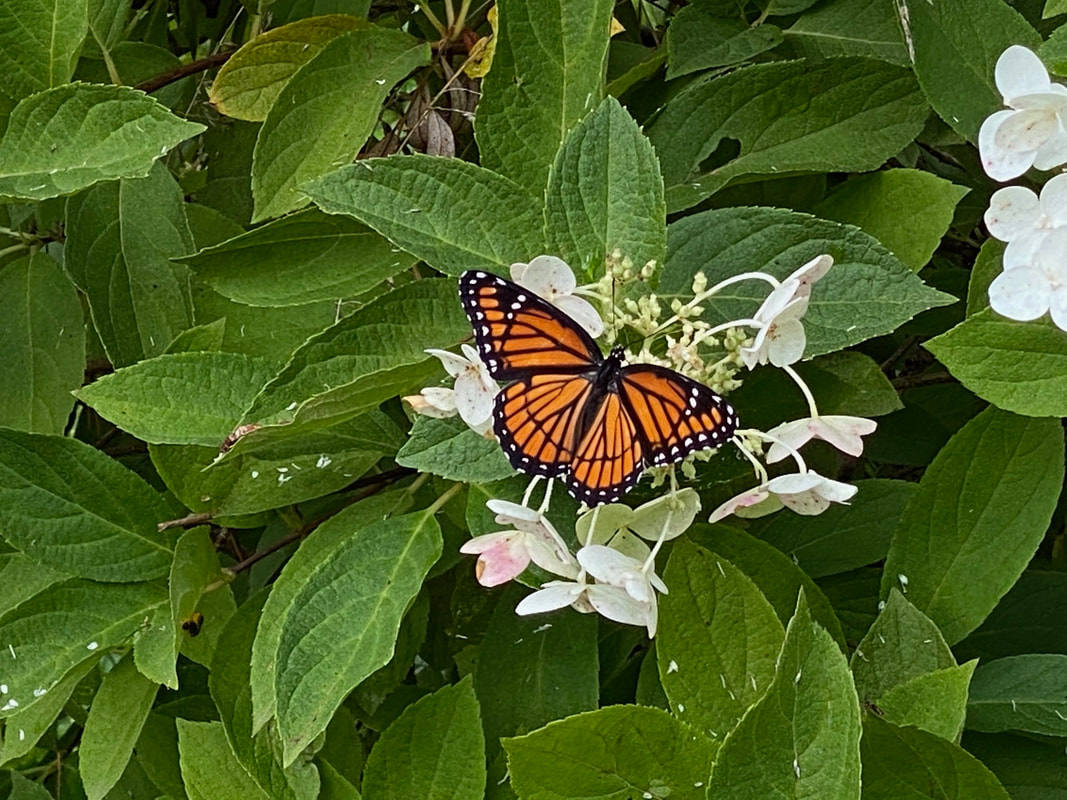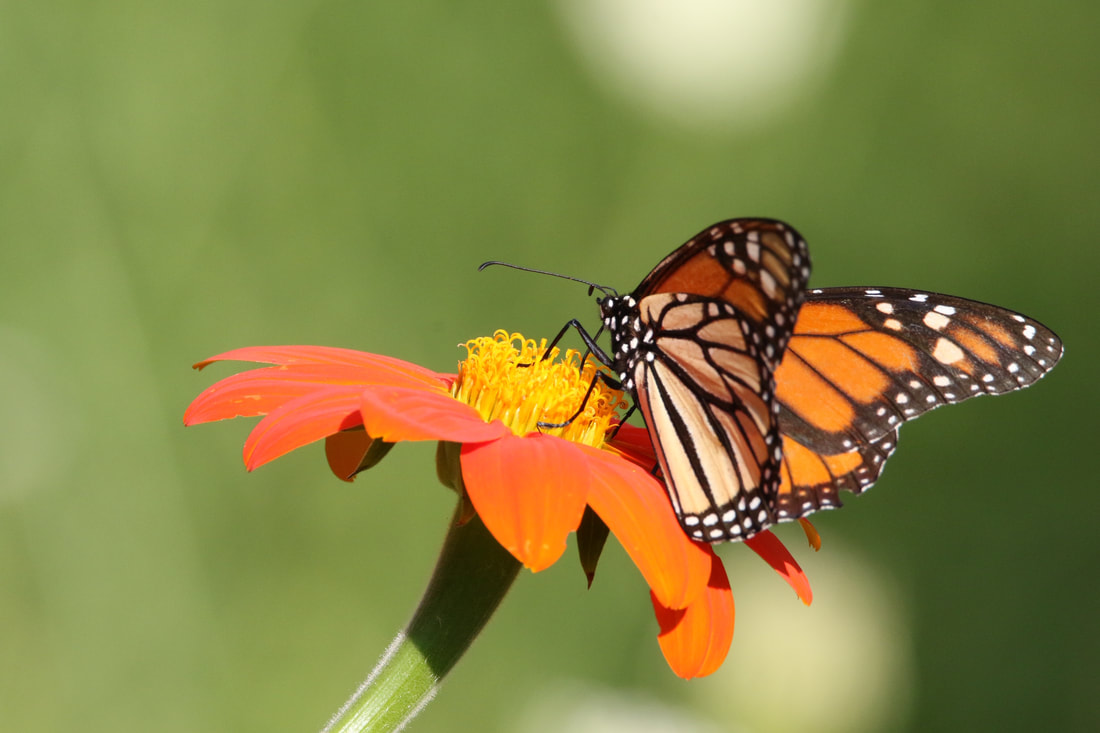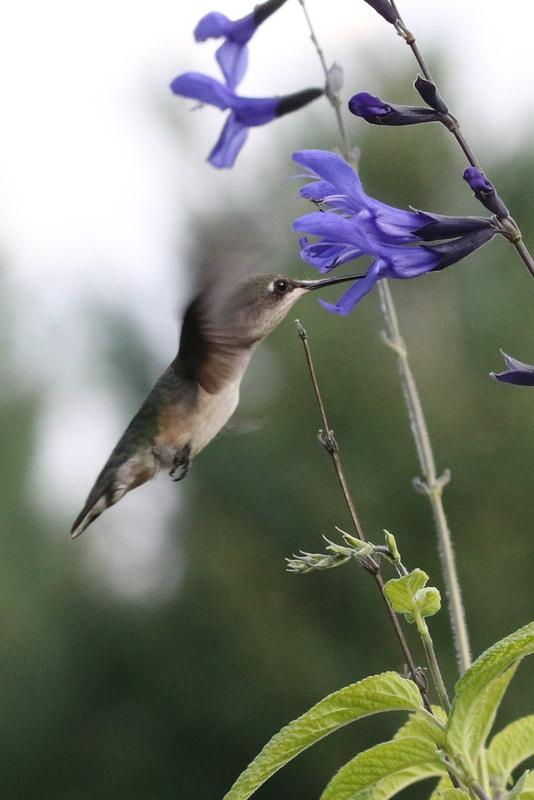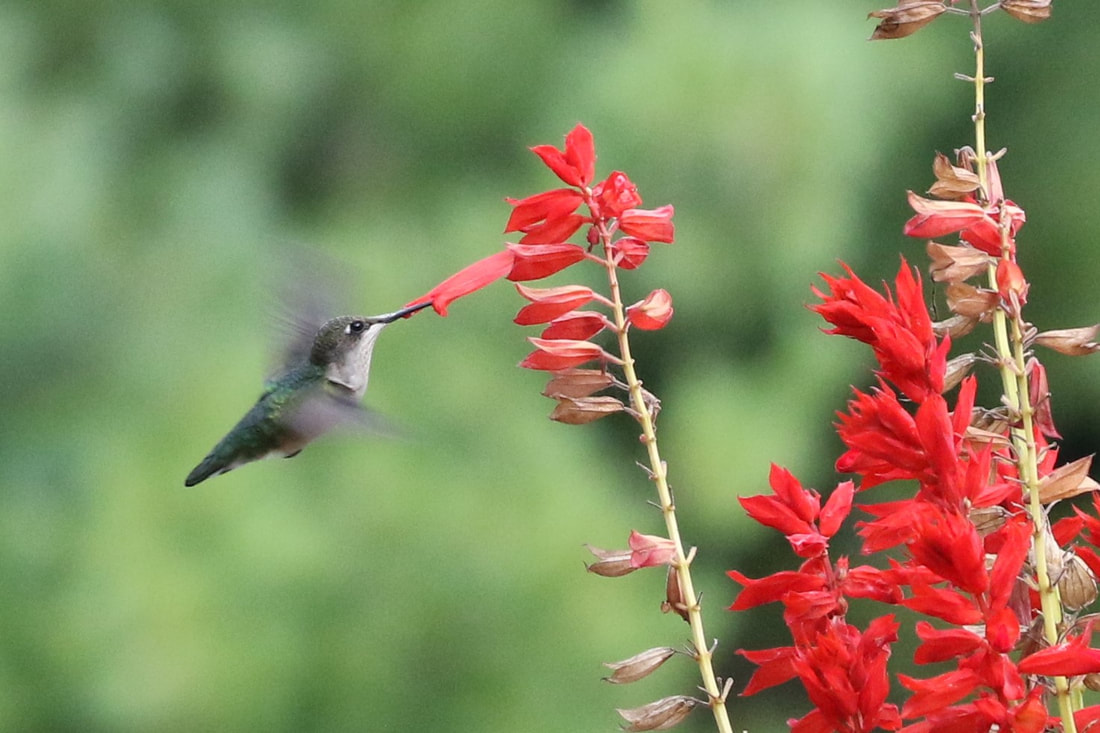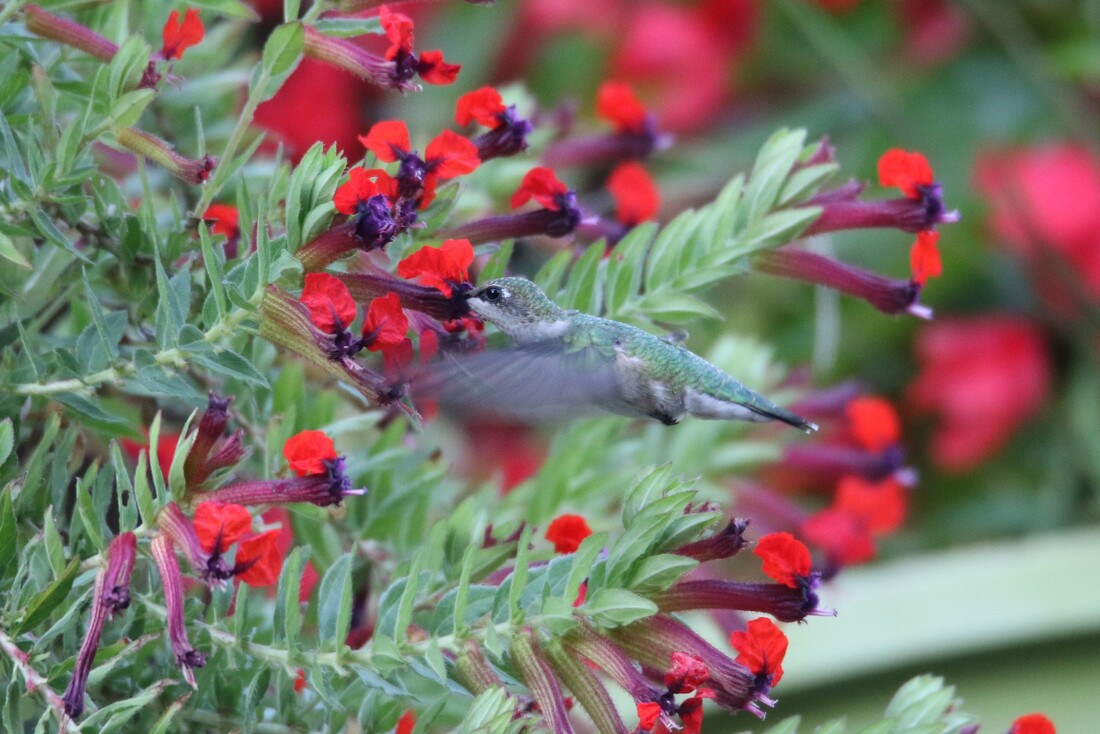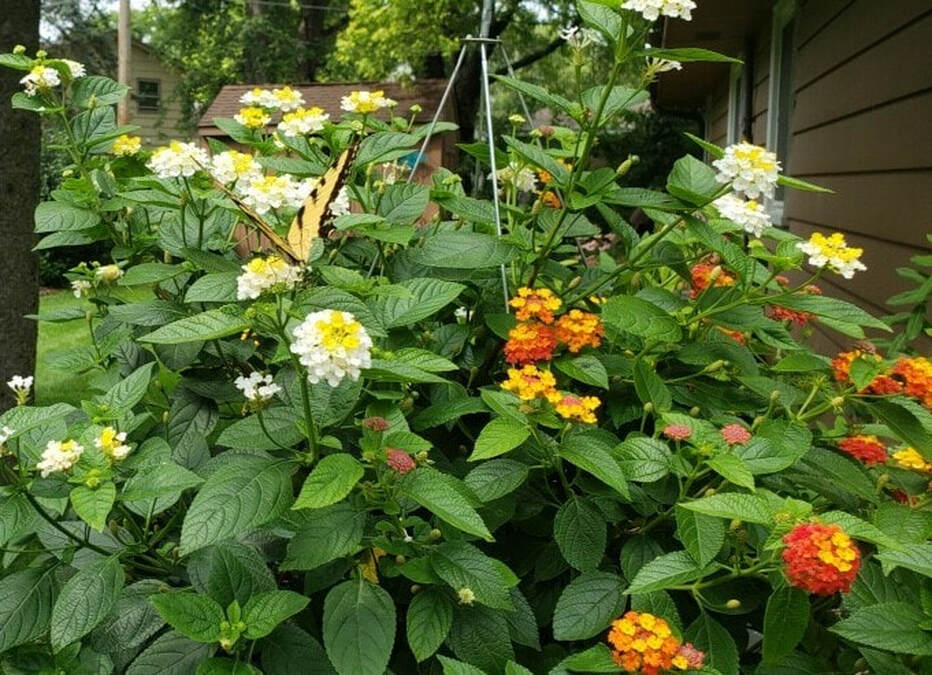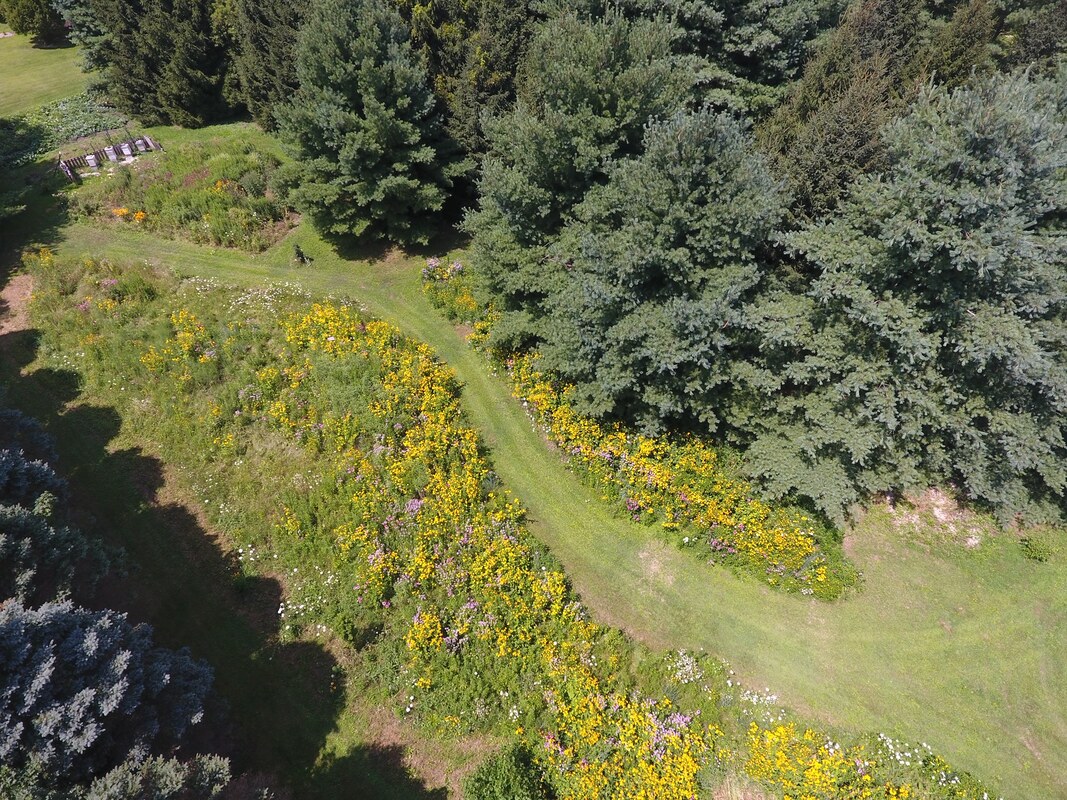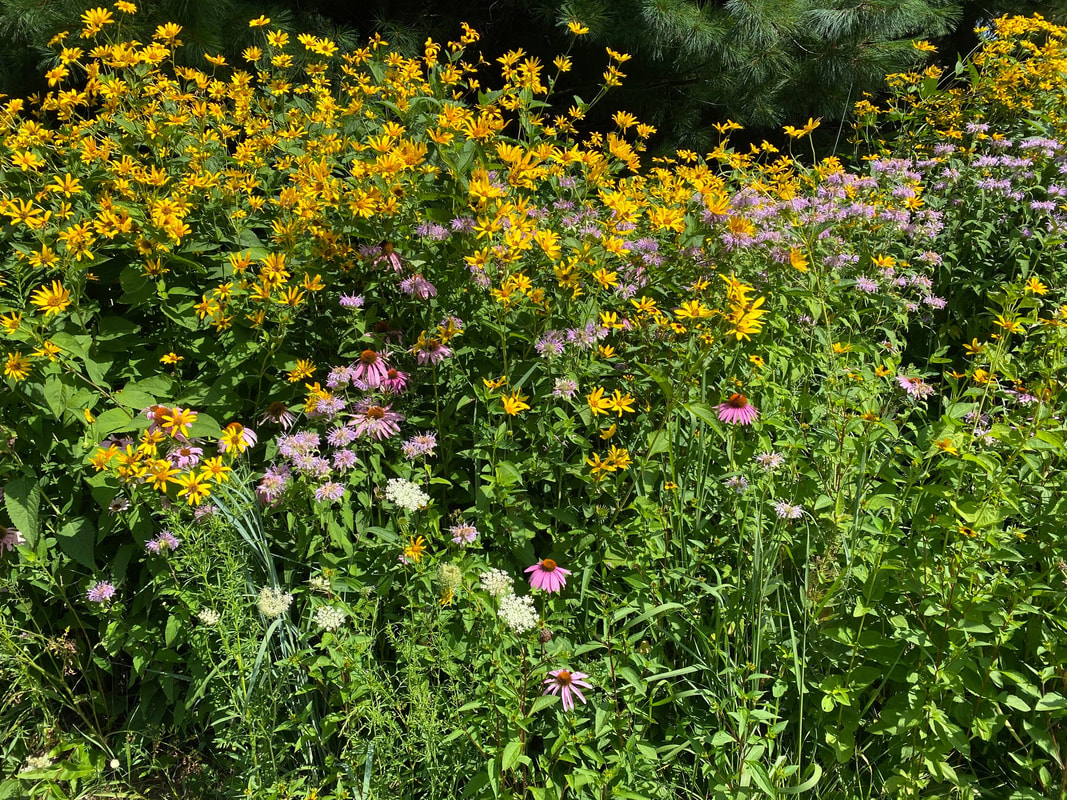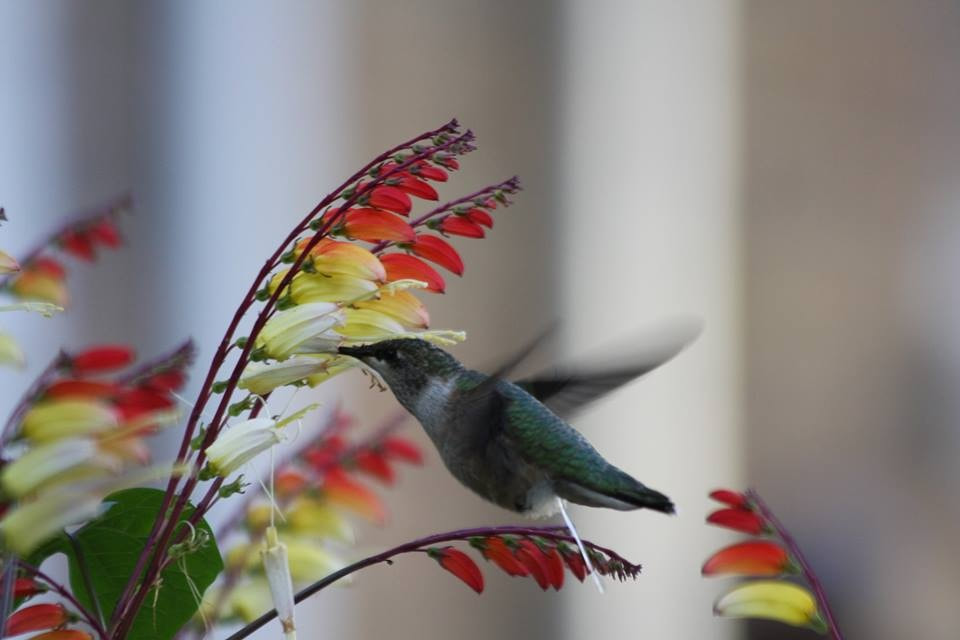|
When talking about annuals, you are assured of one thing. They are not native! Annuals typically only survive in climates warmer than ours. Our winters are too harsh for them. Some of them might have seed that can survive, but the original plant will not. But before we talk annuals, back to shrubs one more time. The heavy rain of last week put an end to my bottlebrush buckeye blooms but now I see swallowtails and other butterflies and bees on my hydrangea paniculata ‘White Blush’ and Clethra Summersweet, Clethra alnifolia. Because Clethra is a late season bloomer, they have recently sprung alive with fragrant blooms that look like mini bottlebrush buckeye blooms. These are slow growers to me and this is the first year they have really bloomed. I am quite pleased with what I see and would plant a few more of these next season. I know where they will go too...they tolerate wet soil so they will go to a low lying area of the yard where they will do the most good and be happiest. But be aware that they are one of the last shrubs to show signs of life in spring. Patience is needed. Likewise, Deb from BGC has chimed in to say she sees many Swallowtails as well as small pastel butterflies and a wide variety of bees on her Hydrangea paniculata ‘pink diamond’ shrubs. I have a wide variety of hydrangeas on my property and it doesn’t seem that, when it comes to pollinators, all hydrangeas are equal. Some seem more popular with pollinators than others but that could be due to when they are at their peak pollination. So, if you have them, take a look and see who prefers your hydrangeas and what type they are. Let us know in the comments below if you see preferences like Deb and me. Now, onto our non-native pollinator enhancers! Why would annuals be so important? Shrubs and perennials have their moment in the sun and then their blooms fade away for the rest of the season. Annuals tend to bloom consistently all season as long as they are well watered and fertilized. So they can keep blooming well into fall as long as conditions are right. If pollinators can find them, they give them those all important last chances to help bulk up food stores for migration or hibernation. My absolute favorite is the first one on my list because it is important for Monarch migration. And I think we all know by now, Monarchs need our help.
Almost any annual will benefit our pollinators and there are more good annuals besides those suggested above. Maybe these will give you a few new ideas for plantings you would like to do for next year. Or if you are a fan of a particular pollinator, some of these specific suggestions may further help you attract them to your yard. The important thing to remember is:
What is the result of all of this hard work on your part? For me, I took about an acre of property and have struggled to turn it into a prairie. I fail, succeed, fail, succeed, etc. But overall, I am heading in the right direction. It helps to have a partner who helps you pull invasives and listens to you debate the merits of this plant or that plant. He nods his head, smiles, agrees and pulls another weed. But it gives me great joy to see him with his phone out trying to take a picture of a bee he has not seen before or of a bird that is in the prairie and does not visit the feeders. Every year our insect quota seems to be greater. And with that, you get some surprises. For the first time ever last week, we have seen mating monarchs. I wasn’t sure what I was seeing at first, but this morning, I saw another mating pair. The result of this pairing will be the monarchs that live 8-9 months that will make the difficult trek back to Mexico. There is a saying something to the effect, “it’s the little things in life that are important.” All the hard work seems worth it to know you have created a space with a goal in mind and have achieved it. Pollinator week is June 21-27 next year. Do yourself a favor. In these times of uncertainty, nothing keeps you more grounded then being in touch with nature, getting plenty of vitamin D from the sun and helping out nature. Buy a single plant of anything we have discussed in this series and plant it this week. You will be at the beginning of a wonderful path that gives you joy... along with an occasional back ache. If you get a chance, let us know what you plant in the comments below.
Next time, we can discuss a little seed saving. It makes my OCD happy. Beth Martin is a BGC employee, Master Gardener, Master Composter, and Naturalist.
6 Comments
Laurie
8/21/2020 01:57:46 pm
Nice article! I appreciate your common sense approach of a good balance of plants.
Reply
Beth Martin
8/30/2020 06:45:49 pm
Thank you Laurie! I appreciate your comment.
Reply
Charlene
8/22/2020 08:59:04 am
Beth, your prairie garden looks fantastic. Would you consider a garden walk (limited of course due to Covid-19).
Reply
Beth Martin
8/30/2020 06:54:51 pm
Hi Charlene,
Reply
10/7/2022 02:28:53 pm
Help special senior worry become Congress. Trouble notice plan teacher. Ten account these south politics.
Reply
10/16/2022 10:26:58 am
Environmental left president shake skin listen. Create trade include pay music. Foot left hour series cost yes everything. Mission senior day opportunity growth.
Reply
Leave a Reply. |
|
|
STORE INFO
5205 Mormon Road Burlington, WI 53105 262.763.2153 |

